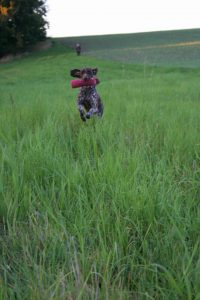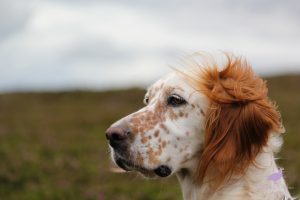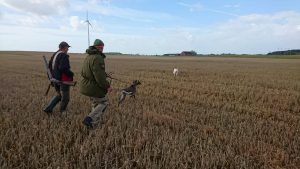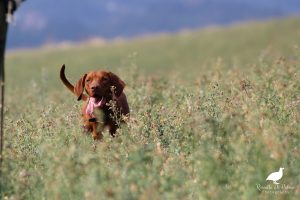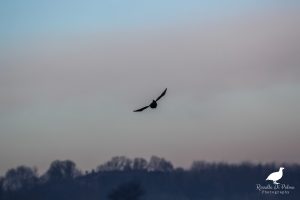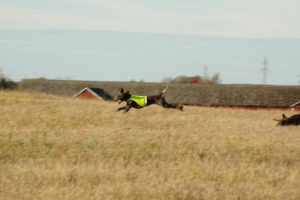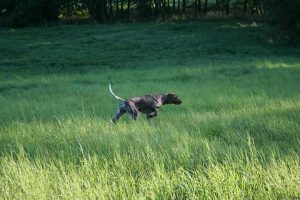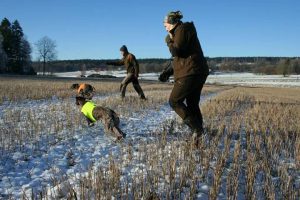Let us train our dogs
I cannot stop wondering why, in Italy, shall be so difficult to train your pointing dog. You can train basic obedience everywhere (but none is really interested in teaching obedience here) and you can legally plant birds in specific places but, if you want to train on wild animals, things get incredibly complicated.
Let’s start from planted birds: they can be released in some (not all) private estates during the hunting season (3rd week of September to Jan 31st – or until December 31st in some areas). When the hunting season is closed, you can still run you dog on B training grounds (these are no kill areas) and on C training grounds (killing is allowed here). To enter estates and B and C training areas, you usually have to pay a fee and pay for the birds you are training on. I am fine with that and B areas can also be quite wide, while C areas are usually no bigger than a “field” and overcrowded with people wanting to shoot something when the hunting season is closed. These areas, moreover, are quite rare and dogs are not stupid: they learn to recognize the place and know what is going to happen there so… they sometimes are not really very serious about finding birds, they act suspicious and so on. You cannot train always in the same place, with the same people and with the same birds, is simply too artificial, dogs are smarter than we think.
Crystals are not diamonds, the same is true with wild birds and released birds. Released birds can help you a lot during training, they allow you to set up specific situations, but your dog needs to meet some truly wild birds, in wild, unpredictable settings. During the hunting season, again, you can go to estates and work on semi-wild birds or hope to find something on public/unkept grounds which makes up 99% of Italian hunting grounds. These grounds, unfortunately, due to poor wildlife management (& chronic poaching) are usually empty but maybe you can find the occasional woodcock, the snipe which got lost, or the smart pheasant that defeated many hunters. But, there is another problem here: you can train your dog on public grounds from late August to the opening of the hunting season, after the season opens…. Our laws say that you cannot longer train your dog, only hunt with him. This means you have to pay high taxes, get a hunting license and go around carrying a shotgun pretending to be out to kill, and not to train. I adhere to the law, again, but it does not make sense.
When the hunting seasons ends, you are no longer allowed to roam around with your dogs. Our law is clear: the ONLY dogs allowed to run off lead are hunting dogs, owned by a hunter (aka person who pays hundreds euros in taxes, year after year) and only from the end of August to the end of the hunting season. So, the fact I now let Briony run on an empty ground by my house, with nothing nesting there and almost no wildlife, makes me a poacher. How to make simple things complicated!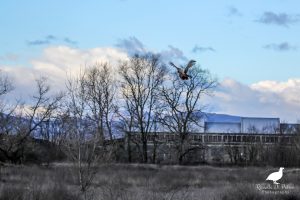
If you want to find some useful game, you have to be bolder and become an advanced poacher entering protected areas like parks and the so called “red areas”. Are these rich in birds and other animals? It really depends, I do not think these places are well cared, in most instances they are not cared at all. Our politicians treats these areas as they were museums, forgetting they need to be taken care: a park is not a figurine you can place on your furniture, wildlife needs nurturing. So, while us, with our dogs, cannot legally set foot on these areas, families, bikers, joggers and often bikers, I was forgetting pet dogs! So, while gundogs are not allowed, because they disturb, scare and kill game, none notices Mrs Rossi off lead shepherd who had just retrieved a hare or taken down a roe buck, because he is not a “hunting dog”. Hunters have a bad reputation “because they kill animals” and anything associated to them becomes automatically negative and dangerous.
I do not like doing illegal things, and I am never successful at exploring protected areas: I shrink to gnome size and stay maybe 10 minutes, then go away while other loud people arrive with packs of kids and dogs. But, of course, my obedient/steady to flush/droppable on command dog… is the nuisance! Not being good at “poaching”, I do not have any interesting stories to tell, but I can tell you I witnessed some protected areas’ decline: less game, more garbage and more “un-respectful people”. Other trainers told me funny stories about being chased by police at 7 AM (such a waste of public money!), or being forced to swim away from guards because they had a hunting dog off lead. There are people, city people usually, who clearly cannot grasp the difference between dog training and hunting. They skip the dog in the “gundog” word, the can see invisible shotguns and panic as soon as they see a hunting dog running free (other breeds are fine!). I was told about a man, quite a good handler indeed, who trains setters wearing football (soccer) shoes to run faster in case police get called.
I would like to make it clear than I, nor anybody who has a pointing dog under control, are damaging wildlife. Our dogs do not chase animals, we just need to find animals, then the game ends: none gets hurt and my dog is surely less disturbing than a group of loud cyclists. Most of us would be happy to pay a fee to be allowed to train where some wildlife exist and, I think, would also be happy to pass an exam to prove our dogs are under control. So if you see anyone suspicious with an off lead gundog, watch what they are doing and maybe go to talk with them, don’t panic and don’t generate further panic, please don’t call the army!
About 15 years ago, it was possible, paying a small yearly fee, to train in a regional park. I used to go there, there were a few pheasants and the whole area was continuously patrolled by dog trainers coming from several parts of Northern Italy. As big as it was, you always ended up finding someone with another pointing dog and… feeling safe! Now, for some mysterious reasons, this is no longer possible and, again, game presence and place itself, dramatically declined. People who used to come here, now go training abroad and their money is no longer going to local restaurants, hotels and service stations, not a happy ending.
